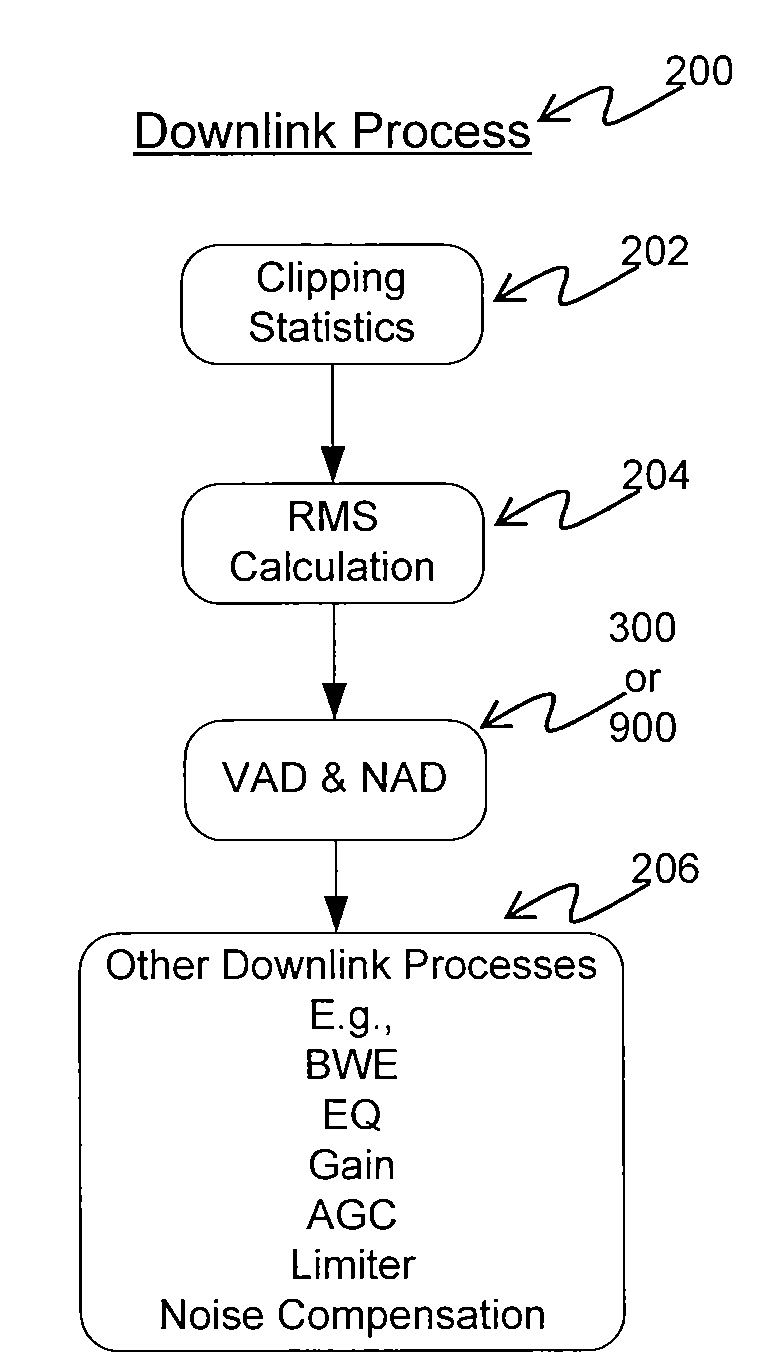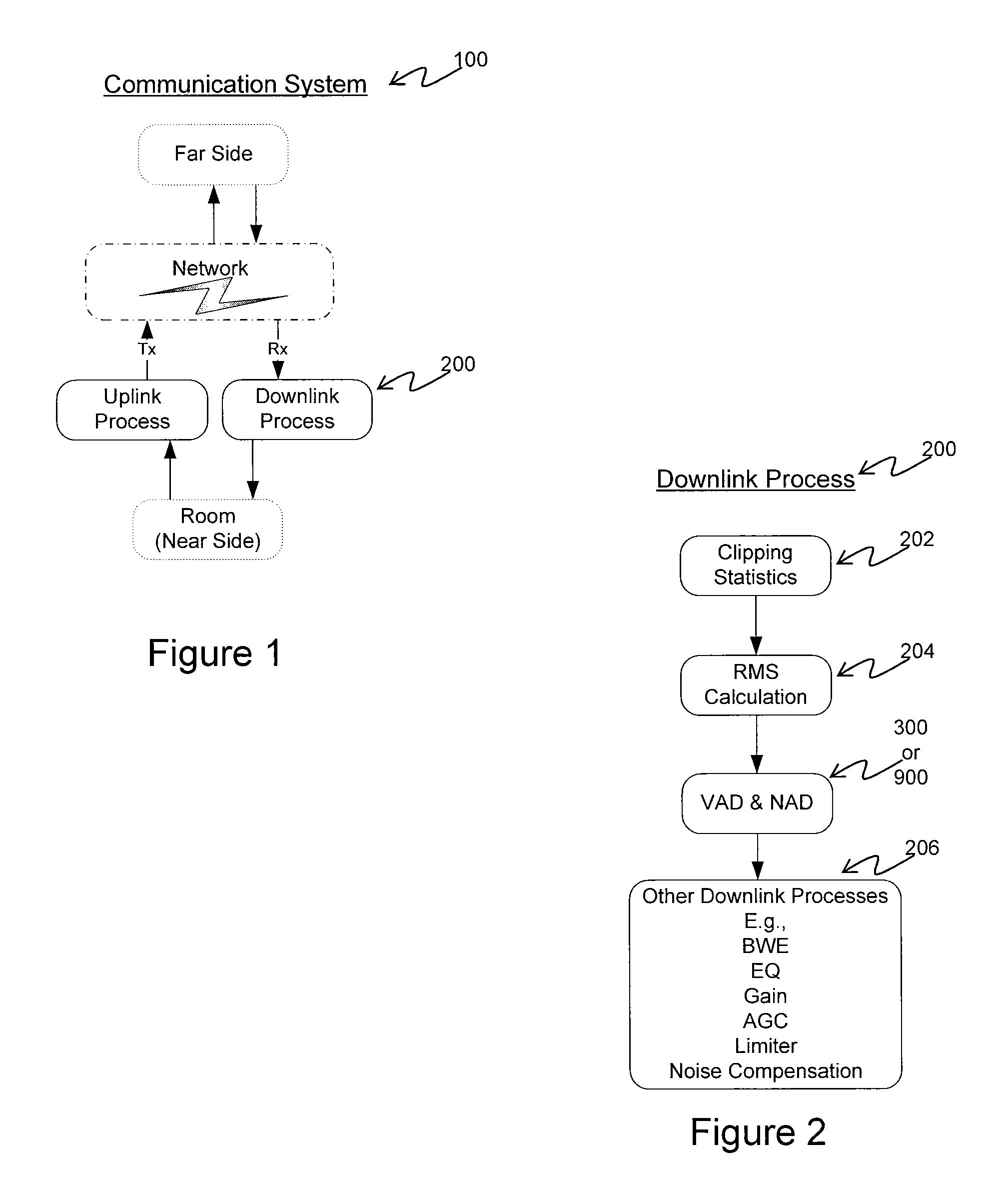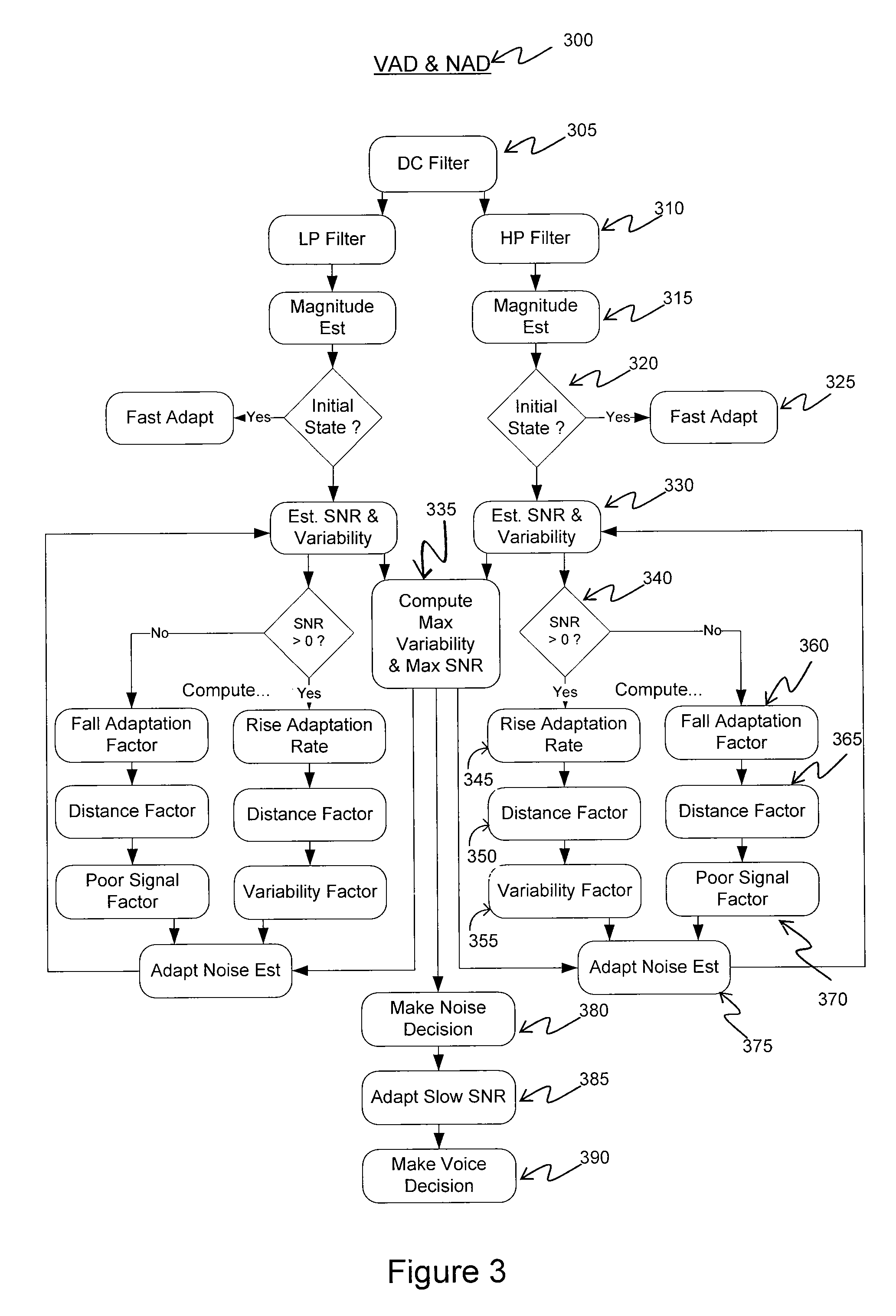Robust downlink speech and noise detector
a speech and noise detector technology, applied in the field of speech and noise detection, can solve the problems of false identification of voice activity and unnecessary attenuation in parties, and achieve the effect of low and high signal-to-noise ratio
- Summary
- Abstract
- Description
- Claims
- Application Information
AI Technical Summary
Benefits of technology
Problems solved by technology
Method used
Image
Examples
Embodiment Construction
[0019]Speech may be detected by systems that process data that represent real world conditions such as sound. During a hands free call, some of these systems determine when a far-end party is speaking so that sound reflection or echo may be reduced. In some environments, an echo may be easily detected and dampened. If a downlink signal is present (known as a receive state Rx), and no one in a room is talking, the noise in the room may be estimated and an attenuated version of the noise may be transmitted across an uplink channel as comfort noise. The far end talker may not hear an echo.
[0020]When a near-end talker speaks, a noise reduced speech signal may be transmitted (known as a transmit state (Tx)) through an uplink channel. When parties speak simultaneously, signals may be transmitted and received (known as double-talk (DT)). During a DT event, it may be important to receive the near-side signal, and not transmit an echo from a far-side signal. When the magnitude of an echo is ...
PUM
 Login to View More
Login to View More Abstract
Description
Claims
Application Information
 Login to View More
Login to View More - R&D
- Intellectual Property
- Life Sciences
- Materials
- Tech Scout
- Unparalleled Data Quality
- Higher Quality Content
- 60% Fewer Hallucinations
Browse by: Latest US Patents, China's latest patents, Technical Efficacy Thesaurus, Application Domain, Technology Topic, Popular Technical Reports.
© 2025 PatSnap. All rights reserved.Legal|Privacy policy|Modern Slavery Act Transparency Statement|Sitemap|About US| Contact US: help@patsnap.com



